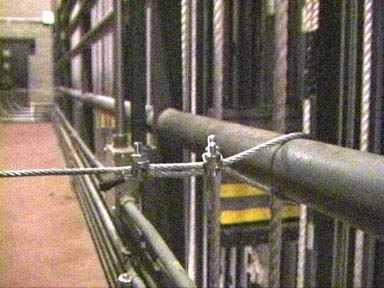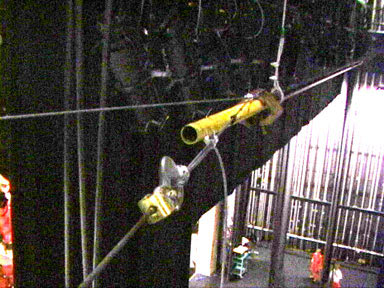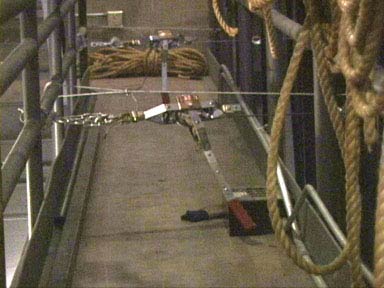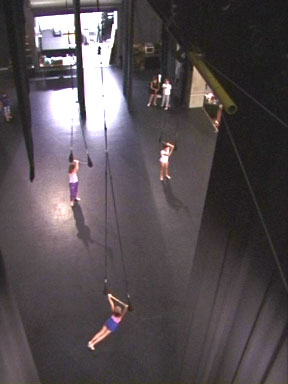
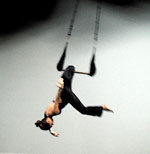
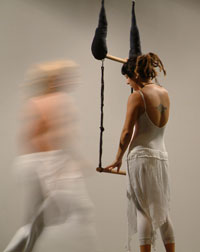
Trapeze Rigging PhotosThe photos below show a secured "Batton" at The Center for the Arts, Pima West Proscenium Theatre in Tucson, Arizona. The motive behind this work is to "lock" a line set in place using a triangular series of cables and come-a-longs. The come-a-long supplies the tension that locks the baton in place and keeps it from swinging while the dancers are on the Trapeze. |
|
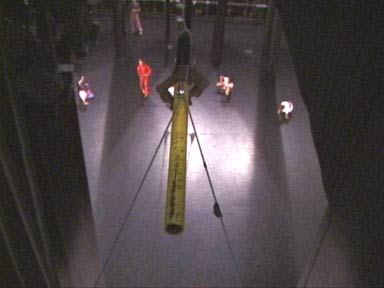
This photograph shows the Batton "captured" in a triangular rig using 1/4" aircraft cable. The view is down, from the catwalk, looking at the stage floor, Stage Right.
Here, the ends of the cables attached to solid points on the catwalk on the Stage Right side of the batton.
The cables on the come-a-long side attach to the pipe using double instrument clamps. Both ends of the pipe use the same clamp configuration. Care must also be taken that other equipment in the fly space, (lights, screens, soft goods, etc) are flown out above the secured pipe. Even when well rigged, the pipe may sway up and down stage while the dancers use the trapeze..
The attachment point of Stage Right, showing the come- a-long. Two are shown here, as there are two battons rigged in this photograph. Each pipe is individually secured. Generally, each trapeze hangs on its own pipe.
This image shows a close up of the attachment point of the come along. The come-a-long is only used on one point. If placed correctly, its tension will pull on all three other cables, locking the pipe in place. Additional securing may be necessary at the pin rail, if the theatre fly system uses "floating" pulleys and blocks. Each line set is also double snubbed.
Dancers on the trapeze, from above.
|
